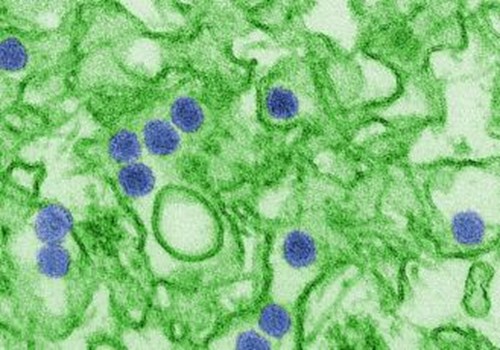NCPV’s global impact in 2016: Zika virus and beyond

During 2016 NCPV was at the forefront of the global response to the outbreak of Zika virus that has affected people in up to 70 countries across South America, the Caribbean and the Western Pacific Region since October 2013. We supplied live Zika virus strains or RNA from NCPV Zika strains to 50 different groups of scientists in 16 countries. NCPV also made publically available the first Zika virus strain with extensive genome sequence data isolated from a semen sample1.
Our colleagues in PHE’s National Infection Service Research Department used NCPV 1308258v, Zika virus strain MP1751, to identify a suitable small animal model for testing potential future interventions against Zika viruses. Zika strain MP1751 was isolated in 1962 from pools of Aedes africanus mosquitoes that were captured in the Zika Forest, Uganda. This study was published in May 2016 and we are pleased to note that the team cultivated the virus in Vero cells from PHE’s European Collection of Authenticated Cell Cultures (ECACC)2. Another important study by scientists in Germany used an NCPV Zika virus to demonstrate that commonly used virus inactivation processes used during the production of human plasma and plasma-derived products are effective for inactivation of Zika3.
NCPV viruses were cited in more than 10 further peer-reviewed publications during 2016. Two studies, published by a collaboration between scientists in France and Switzerland, used NCPV 9903141v, the Nakajama strain of Japanese Encephalitis Virus (JEV). In common with Zika viruses, JEV’s are classified as Flaviviridae, and these studies were designed to improve understanding of the pathogenesis and transmission of JEV using a pig model; pigs are considered to be the main amplifying host for JEV4,5. Other NCPV Flaviviridae cited in literature in 2016 included NCPV 0006041v (Dengue 2 New Guinea C strain) and NCPV 0209291v (West Nile Virus NY99) that were used by scientists based in Italy, Spain and USA to validate the human enzyme DDX3 as a therapeutic target6.
The chikungunya virus (CHIKV) has become a substantial global health threat due to its re-emergence, considerable disease burden and the lack of vaccines or therapeutics currently available. A collaboration of scientists based in Belgium, France, Netherlands and Spain who reported on a novel target for the inhibition of chikungunya virus infection used NCPV 0005281v (Ross River Virus)7. Another group in Poland used NCPV 0310051v (Human Coronavirus HCoV-229E) to study virus inhibition8, while researchers in Belgium and Russia used NCPV 0812214v (Enterovirus 71) to evaluate the impact of modification of the linker of N6-benzyladenosine on its selective antiviral activity against Enterovirus 719.
NCPV was happy to donate two strains of Adenovirus (type 2 and type 5) and three strains of Zika virus to the National Institute for Biological Standards and Controls (NIBSC, UK) in 2016, to support development into a possible International Biological Reference Preparation, as established by WHO as part of their biological standardisation programme.
Finally, we were delighted to feature on a Brazilian TV station, related in part to our worldwide provision of Zika viruses, and also in the popular Italian science publication, Focus, which helped us to raise awareness of NCPV and the importance of using NCPV’s authenticated viruses in scientific studies.
Click here to view the references
